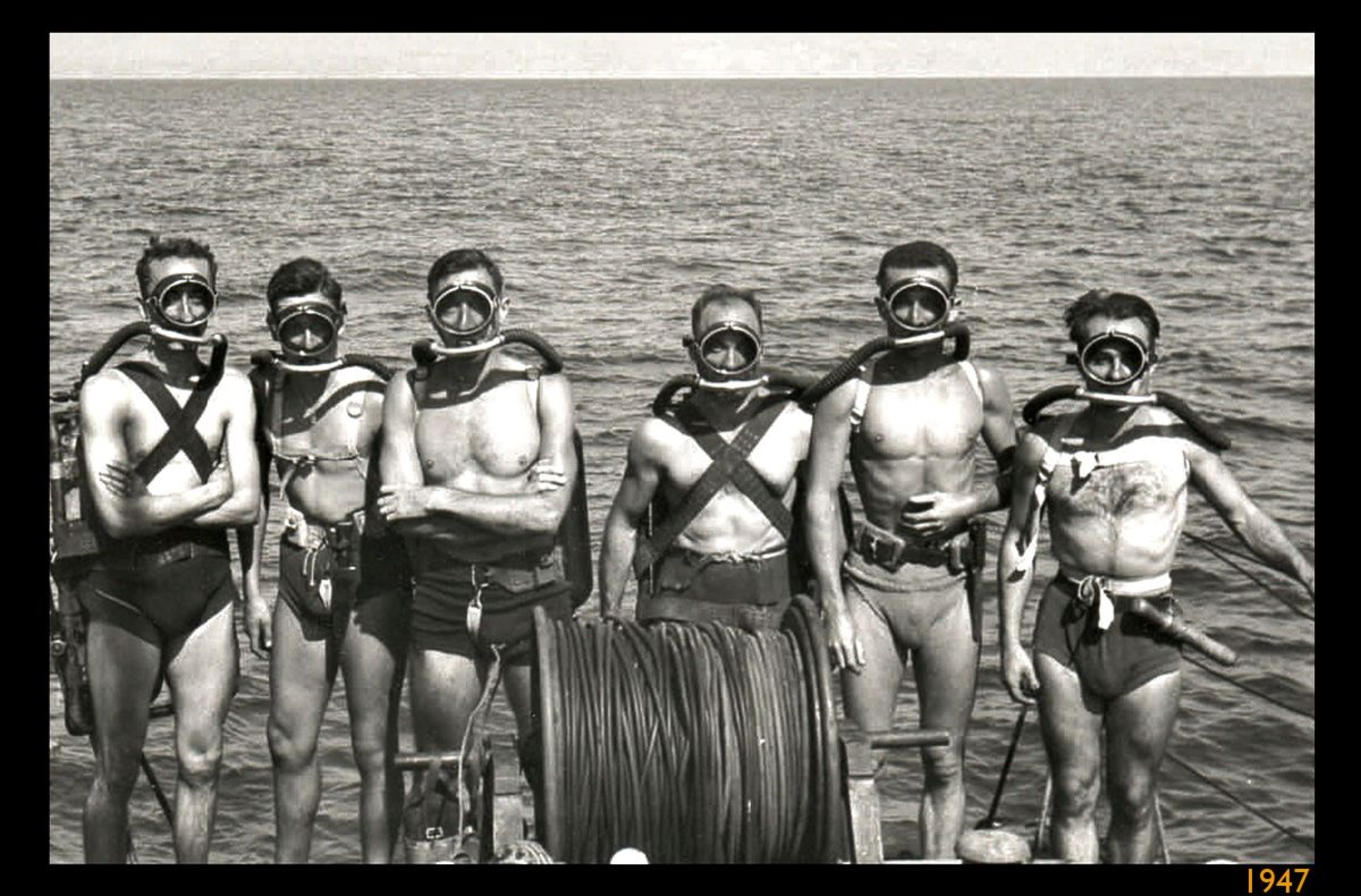
- Home
- A great scientific adventure
- Once upon a time
- The Pioneers
An invention revolutionizes underwater diving
In 1907 the work of Alfred Merlin, Louis Poinssot and Louis Drappier on the Mahdia wreck marked for archaeologists the opening of a vast, new avenue of research: the bottom of the sea.
But it took another thirty years and the invention of the aqualung by Jacques-Yves Cousteau and Émile Gagnan for archaeology to fully realize the significance of this pioneering event. Suddenly a wider public could gain access to this hidden underwater world. Divers soon began locating huge numbers of wrecks, initially in the Mediterranean Sea and then in all the oceans.
Back to where it began
Armed with their new diving apparatus, Philippe Tailliez, Jacques-Yves Cousteau and Frédéric Dumas headed to Mahdia in 1948 to carry out what would be the first underwater archaeological survey. They had met each other in 1937/8 and instantly bonded over their love of the sea and underwater exploration
At that time, devices for removing sediment and special excavation methods had yet to be invented. Making do with what they had, these pioneers managed to establish the basic principles of underwater archaeology, but they were not alone. Unscrupulous divers were beginning to appear on the scene to loot and plunder wrecks.



